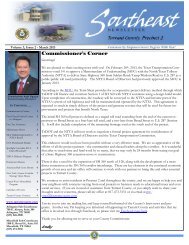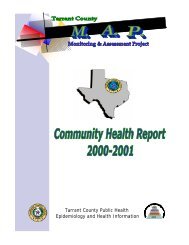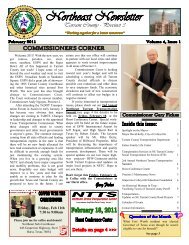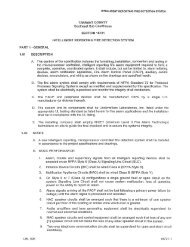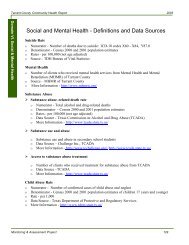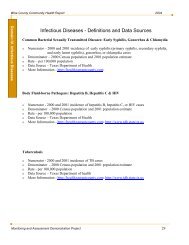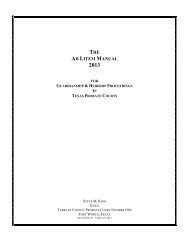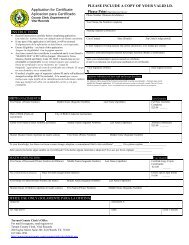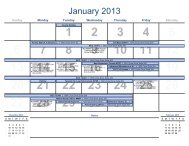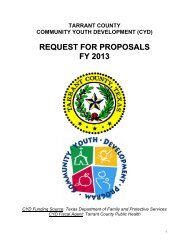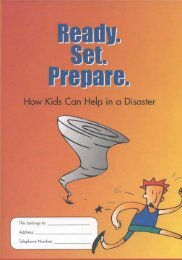MAPP Handbook - The National Association of County and City ...
MAPP Handbook - The National Association of County and City ...
MAPP Handbook - The National Association of County and City ...
Create successful ePaper yourself
Turn your PDF publications into a flip-book with our unique Google optimized e-Paper software.
In some communities, it may make sense to pool financial resources <strong>and</strong> subcontract<br />
the data collection <strong>and</strong> analysis to a private consultant, one <strong>of</strong> the partners, or a<br />
university. <strong>The</strong> state health agency may also be able to assist by providing data or<br />
helping with analysis.<br />
User Notes:<br />
Phase 3:<br />
COMMUNITY HEALTH STATUS ASSESSMENT<br />
Step 2 — Collect data for the core indicators on the CHSA<br />
indicator list<br />
Since data collection can be time-intensive, begin the process early. Consider beginning<br />
data collection during the Organize for Success phase. Attempt to collect a minimum<br />
<strong>of</strong> five years <strong>of</strong> trend data to analyze trends over time. Comparison data—state,<br />
national, <strong>and</strong> peer community data—should also be collected during this phase.<br />
T<br />
hings to remember when collecting data:<br />
• Collecting <strong>and</strong> analyzing a broad range <strong>of</strong> data is time consuming.<br />
To address this challenge, begin collecting data as early in the<br />
<strong>MAPP</strong> process as possible.<br />
• Data collection <strong>and</strong> analysis is resource-intensive. Collaboration<br />
among local public health system partners helps utilize resources<br />
more effectively.<br />
Below are some suggestions for identifying data sources for indicators:<br />
• Use state or local databases. Many CHSA core indicators may already have<br />
been collected by local or state agencies.<br />
• Access previously conducted health assessments or reports that<br />
include data. Collect health assessments conducted by community coalitions,<br />
hospitals, health departments, <strong>and</strong> other organizations. <strong>The</strong>se data can provide<br />
useful benchmarks for identifying trends <strong>and</strong> can also <strong>of</strong>fer tips on where to find<br />
current data.<br />
• Identify participants who may have access to data through their<br />
organizations. For example, a hospital representative may be useful in gathering<br />
hospitalization or admissions data, while law enforcement representatives may<br />
have access to data for the crime or violence-related indicators.<br />
Phase 3:<br />
COMMUNITY HEALTH<br />
STATUS ASSESSMENT<br />
57



